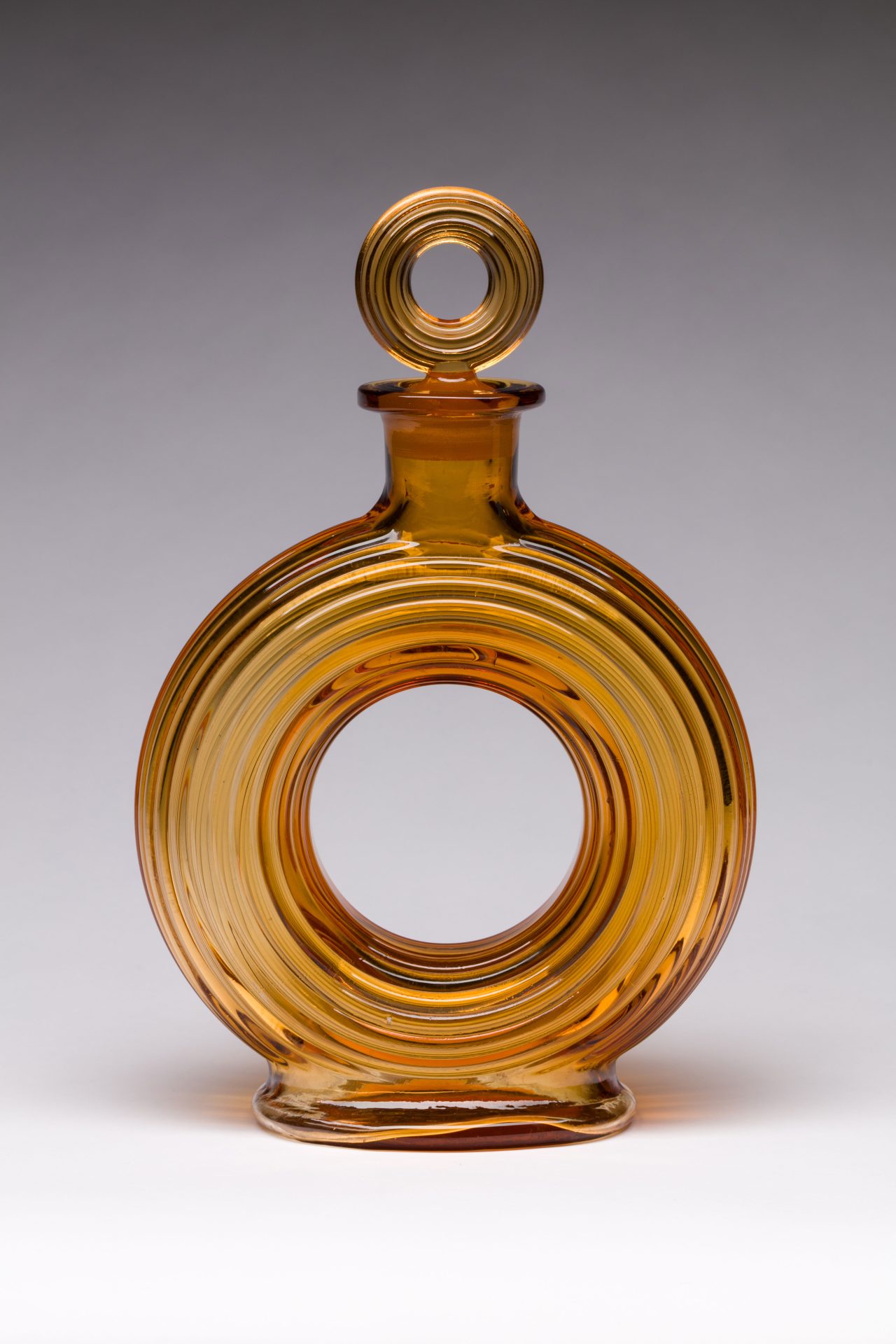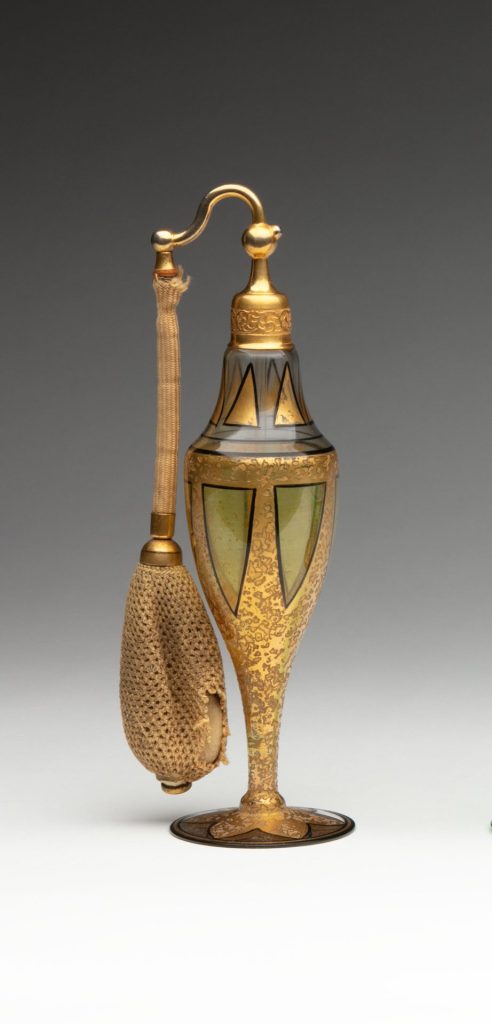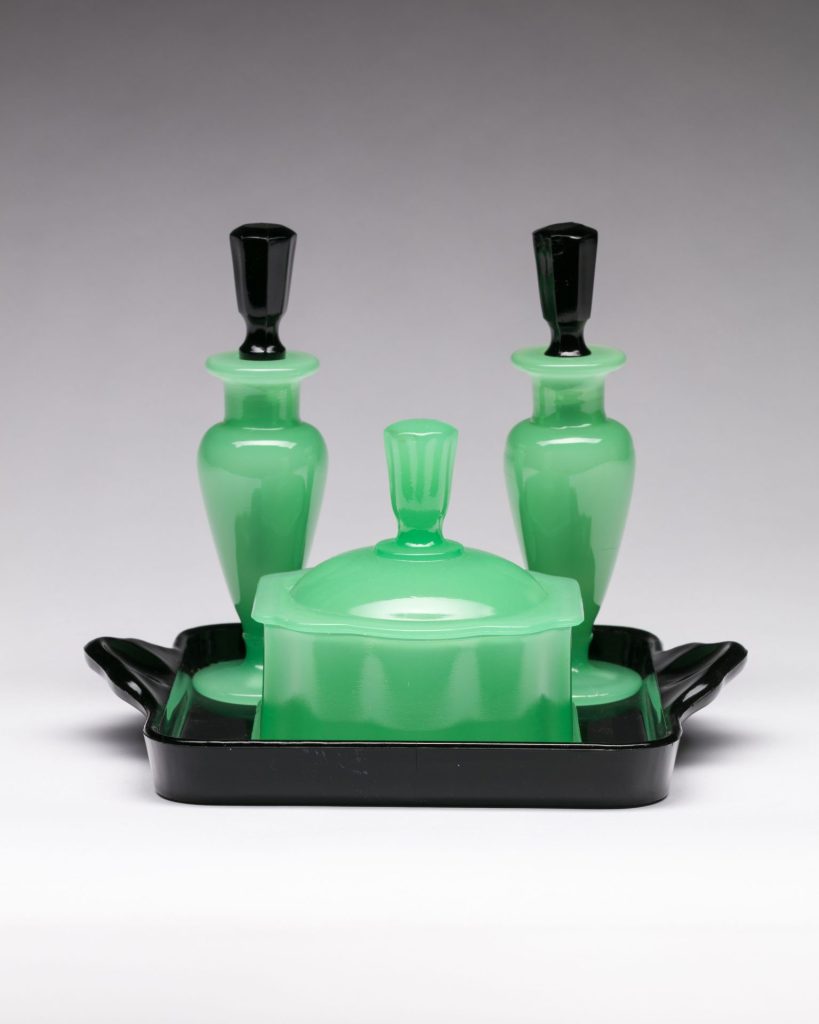A new exhibit at the KIRKLAND MUSEUM takes visitors back in time
By Kastle Waserman

Imagine traveling back in time from 1920 to 1933, when Prohibition was in effect, speakeasies were raging and women had new-found independence.
Starting May 22, visitors to the Kirkland Museum of Fine & Decorative Arts can learn what life was like for women of that period in the exhibit “Vanity & Vice: American Art Deco.”
“Women are really the story of this era,” says Becca Goodrum, the museum’s curatorial associate. “Everything was changing for them, so I knew we needed to make this exhibition about them.”
Visitors will get to know Mabel as she prepares for a night out in her bedroom. They will get a glimpse of her wardrobe and vanity table treasures, including vintage, era-appropriate perfume atomizers, puff boxes and lamps—all pulled from the Kirkland vaults and most never seen before in the museum. Guests can then follow Mabel to her favorite speakeasy and pose for photo ops with antique glasses, barware, ashtrays and chandeliers.


“I came up with the name Mabel based on the Social Security indexes of when I imagined she was born,” says Goodrum. “It was one of the more popular names, and I think it harkens back to that time.”
Mabel takes visitors through a day in her life during this time of change. Technology was on the rise. People had cars, radios, telephones, magazines, fashion, the cinema and chain stores, creating shared cultural experiences.
For women, there was a new level of autonomy. World War I brought women into the workforce, making their own money in an unprecedented way. “Women learned they could make decisions on their own,” says Goodrum.
Prohibition also made for an interesting time. The law was intended to protect the public from “drunkenness” by prohibiting the production, importation, transportation and sale of alcoholic beverages. However, it backfired when the sale and consumption went underground in the form of speakeasies. It was there that women also found new independence, according to Goodrum.
“Even though alcohol was illegal, women began smoking and drinking in public during Prohibition,” says Goodrum. “With the underground nature of the speakeasy, there was an unspoken rule: You didn’t talk about where you were going. So it allowed women to enter these spaces and mingle with the opposite sex without chaperones. It was a huge shift in societal norms of the time.”


Visitors will also see the signature design and quality of the era in the items featured in the exhibit. For example, depression-era glass is a significant focus. “Companies were so clever during the depression in getting people to buy things,” says Goodrum. “Colored glass was cheap and easy for companies to make. They would put a coupon at the local grocery store. It brought a little joy to people and kept glass companies afloat.”
The museum hopes to prompt reflection on what women’s lives were like 100 years ago compared to today. “We don’t want to get too political, but I think we can relate a lot to the women then and wonder what they would think of women now,” says Goodrum. “They’d probably be in awe of how far we’ve come, but also maybe wonder why, after a hundred years, we still don’t have everything we want.”
The exhibit runs May 22, 2024–January 12, 2025.
Kirkland Museum of Fine & Decorative Art
1201 Bannock St., Denver
303.832.8576


